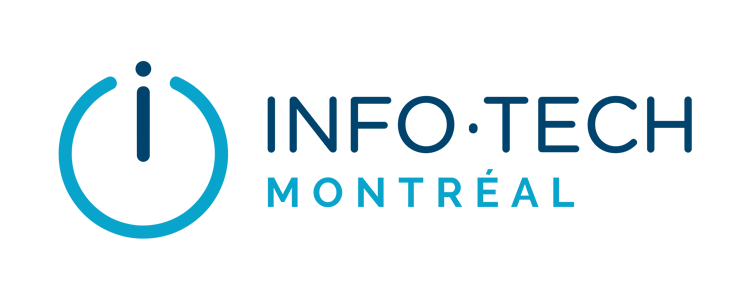The Law 25 Compliance Checklist for Montreal Businesses
We compiled this Law 25 compliance checklist as a simple, easy-to-follow reference to ensure your organization remains fully compliant. You can read more about Law 25’s compliance requirements on the Gouvernment du Québec website.
As a local Montreal IT company, we see firsthand the common mistakes organizations make and the corners they try to cut in an effort to stay compliant with Law 25.
Though quick fixes might seem tempting, achieving true compliance requires a thorough approach that protects sensitive information and avoids common pitfalls, like relying on simple password protection for sensitive documents rather than implementing full encryption and access controls. If you’re ready to gain a complete understanding of what it actually takes to remain compliant, keep reading for a clear breakdown of the essential steps.
Keep in mind that while we cover a comprehensive list of steps, not all may be essential for your organization. Feel free to skip ahead to any sections in this article that seem most relevant to your situation—we’ve organized everything to make it easy for you to find exactly what you need in this easy-to-navigate Law 25 compliance checklist.
Contents
Why Should You Care About Compliance
The 7-Step Law 25 Compliance Checklist
1. Conduct a Data Inventory and Mapping
2. Implement Privacy and Security Policies
3. Appoint a Data Protection Officer (DPO)
5. Ensure Data Minimization and Purpose Limitation
6. Employee Training and Awareness
7. Conduct Regular Audits and Risk Assessments
Why Should You Care About Compliance?
Compliance with Law 25 isn’t optional. Not following it could lead to hefty fines and legal headaches.
Non-compliance with Law 25 can lead to penalties ranging from $5,000 to $50,000 for individuals, and up to $25 million CAD or 4% of global revenue for organizations, with severe cases incurring court-imposed fines and potential claims for damages from affected individuals.
Not a good time, we know.
Beyond the legal risks, non-compliance can hurt your reputation. If you have a data breach or violation, it can shake customer trust. Nobody wants to see their business go down because of data mismanagement!
The 7-Step Law 25 Compliance Checklist
1. Conduct a Data Inventory and Mapping
Start by identifying what data you have, where it’s stored, and who can access it. Knowing your data landscape is the first step to managing it responsibly.
I. Identify Data Sources
Identify all potential data sources within the organization, such as:
- CRM System: Contains client contact information and communication history.
- Email Marketing Tool: Stores subscriber lists and marketing preferences (think SalesForce, HubSpot, ActiveCampaign, Zoho. etc).
- Social Media Platforms: Collects engagement metrics and demographic information from followers.
- Website Forms: Gathers data from contact forms, surveys, and lead generation forms.
- Accounting Software: Maintains billing information and payment details for clients.
II. Collect Data Details
For each identified data source, make note of:
- Type of Data: What specific personal data is collected (e.g., names, email addresses, phone numbers)?
- Purpose of Collection: Why the data is being collected (e.g., for marketing campaigns, client communication)?
- Storage Location: Where the data is stored (e.g., cloud services, local servers)?
- Access Permissions: Who has access to this data (e.g., sales team, marketing team)?
2. Implement Privacy and Security Policies
Create tailored policies that reflect the requirements of Law 25. These policies serve as a framework for how data should be managed, and protect sensitive information from potential breaches.
I. Develop a Privacy Policy
Start by creating a comprehensive privacy policy that outlines how the organization collects, uses, stores, and shares personal data. This policy should include:
- Purpose of Data Collection: Clearly articulate the reasons for collecting specific data, whether for operational needs, customer service, marketing, or regulatory compliance.
- User Rights: Inform individuals about their rights regarding their personal data, such as the right to access, correct, or request the deletion of their information.
- Data Retention: Define how long different types of data will be retained and establish criteria for its deletion to avoid unnecessary data accumulation.
II. Establish Security Policies
Next, develop security policies that dictate the protection of personal data within the organization. Key components may include:
- Access Controls: Establish user roles and permissions to ensure that only authorized personnel have access to sensitive information. This minimizes the risk of unauthorized access and data leaks.
- Data Encryption: Mandate encryption for sensitive data, protecting information from unauthorized access during transfer and while stored.
- Incident Response Plan: Create a detailed plan outlining steps to take in the event of a data breach, including containment measures, notification procedures, and investigation protocols.
III. Monitor Compliance
Establish a monitoring system to ensure adherence to the privacy and security policies. This could involve:
- Regular Audits: Conduct internal audits to evaluate compliance with the policies, such as reviewing access logs to confirm that only authorized personnel access sensitive data.
- Feedback Mechanism: Implement a system that allows employees to report potential security issues or policy violations anonymously, fostering a culture of accountability and vigilance regarding data protection.
IV. Review and Update Policies
Recognize that privacy and security are ongoing concerns that require regular attention. Commit to:
- Annual Policy Review: Schedule regular reviews of the privacy and security policies to ensure they remain aligned with current laws, industry best practices, and the organization’s operational needs.
- Incident Analysis: After any security incident, conduct a thorough analysis to identify weaknesses in the policies and make necessary adjustments to prevent future occurrences.
3. Appoint a Data Protection Officer (DPO)
The DPO plays a pivotal role in ensuring that the organization adheres to data protection laws and implements best practices for data management. Here’s how to approach the appointment and responsibilities of a DPO.
I. Define Roles and Responsibilities
It’s essential to clearly define the role and responsibilities. A DPO typically oversees:
- Compliance Oversight: Ensuring that the organization adheres to data protection laws and regulations, providing guidance on legal requirements and best practices.
- Data Protection Impact Assessments (DPIAs): Conducting assessments to evaluate the risks associated with data processing activities and recommending measures to mitigate those risks.
- Training and Awareness: Developing and implementing training programs to educate employees about data protection principles and their responsibilities.
- Point of Contact: Acting as a liaison between the organization and data protection authorities, as well as serving as a point of contact for individuals whose data is being processed.
II. Select the Right Candidate
Choosing the right individual for the DPO role is critical. Organizations should look for candidates who possess:
- Expertise in Data Protection: A strong understanding of data protection laws and regulations, as well as practical experience in compliance.
- Ability to Communicate Effectively: Strong communication skills to engage with various stakeholders, including employees, management, and external parties.
- Independence and Objectivity: The DPO should have the autonomy to perform their duties without interference, ensuring they can address data protection issues candidly.
III. Ensure Resources and Support
To effectively fulfill their responsibilities, the DPO should be provided with adequate resources and support, including:
- Access to Management: Ensuring the DPO has a direct line to senior management to address data protection matters effectively.
- Budget and Tools: Allocating a budget for the DPO to carry out their duties, which may include conducting training, performing audits, and implementing data protection initiatives.
- Collaboration with Other Departments: Encouraging collaboration with IT, legal, and compliance teams to ensure a holistic approach to data protection across the organization.
4. Obtain Informed Consent
Make sure your processes for getting consent are clear and documented. People should know exactly how their data will be used.
I. Clearly Define Data Usage
Organizations should explicitly communicate how personal data will be used. This includes:
- Purpose of Data Collection: Clearly state the reasons for collecting personal data, such as for service delivery, marketing communications, or improving products.
- Data Sharing Practices: Inform individuals if their data will be shared with third parties, such as partners or service providers, and explain the reasons for sharing.
II. Use Plain Language
To ensure that consent forms and communication materials are easily understood, organizations should use plain language that avoids technical jargon. This helps individuals comprehend what they are consenting to. Key points to consider include:
- Simplicity: Use straightforward language and short sentences to explain data collection practices.
- Visibility: Highlight important information, such as key terms and conditions, so that individuals can quickly identify critical points.
III. Provide Options for Consent
Consent should be given freely by the individual. Organizations should offer individuals the following options:
- Granularity: Allow individuals to consent to different types of data processing separately. For instance, they might consent to marketing communications while opting out of data sharing with third parties.
- Withdrawal of Consent: Clearly communicate that individuals can withdraw their consent at any time and explain how they can do so.
IV. Document Consent
Organizations should maintain records of consent to demonstrate compliance with data protection laws. This can involve:
- Consent Logs: Keeping a log of when and how consent was obtained, including the information provided to individuals at the time of consent.
- Version Control: Keeping track of changes made to consent forms and privacy notices to ensure that individuals are aware of the most current terms.
V. Regularly Review Consent Practices
As regulations and business practices evolve, it’s important to regularly review and update consent practices. This includes:
- Periodic Assessments: Evaluating how consent is obtained and ensuring it remains in line with legal requirements and best practices.
- Feedback Collection: Seeking feedback from individuals about the consent process to identify areas for improvement.
5. Ensure Data Minimization and Purpose Limitation
Only collect the information you truly need for specific purposes. This not only helps with compliance but also keeps things manageable.
I. Understand Data Minimization
This practice reduces the risk of unauthorized access or breaches by limiting the amount of sensitive information stored. Key aspects to consider include:
- Identifying Necessity: Before collecting data, evaluate whether each piece of information is essential for achieving a specific business objective, such as service delivery or compliance with legal obligations.
- Regular Reviews: Periodically review the data collected to ensure that it remains relevant and necessary for the intended purpose. This can help identify any data that can be safely deleted or archived.
II. Define Clear Purposes for Data Collection
Purpose limitation requires that personal data is collected for legitimate, explicit, and defined purposes. Organizations should:
- Establish Clear Objectives: Clearly define the purposes for which personal data will be collected, ensuring they are legitimate and aligned with the organization’s objectives.
- Document Purposes: Maintain documentation of the purposes for data collection to provide transparency and accountability. This can help demonstrate compliance with data protection regulations if questioned.
III. Limit Data Retention
Data minimization also involves limiting the retention period for personal data. Organizations should:
- Define Retention Periods: Establish specific timeframes for retaining different types of data based on legal requirements and business needs. For instance, client data may be retained for a certain number of years for compliance, while marketing data may have a shorter retention period.
- Implement Deletion Procedures: Create procedures for securely deleting or anonymizing data that is no longer necessary for the defined purposes. This reduces the risk of retaining unnecessary personal data.
6. Employee Training and Awareness
Regularly train your staff on privacy and data security policies. It’s essential for preventing accidental breaches.
I. Develop a Training Program
Start by creating a structured training program that covers all aspects of data protection relevant to the organization. This program should include:
- Core Concepts: Introduce employees to the fundamentals of data protection, including the principles of data minimization, purpose limitation, and informed consent.
- Company Policies: Ensure employees are familiar with the organization’s specific data protection policies and procedures, including how to handle personal data safely and securely.
II. Use Engaging Training Methods
To ensure effective learning and retention, use a variety of engaging training methods. These might include:
- Interactive Workshops: Facilitate workshops that involve case studies, discussions, and role-playing scenarios to illustrate potential data protection challenges and solutions.
- E-Learning Modules: Develop online training modules that employees can complete at their own pace. This flexibility allows for more thorough engagement with the material.
- Quizzes and Assessments: Incorporate quizzes and assessments to evaluate employees’ understanding of the material and reinforce learning objectives.
III. Establish a Reporting Mechanism
Encourage a culture of accountability by establishing a clear reporting mechanism for data protection concerns:
- Anonymous Reporting: Create a system that allows employees to report potential data breaches, suspicious activities, or policy violations anonymously. This encourages employees to speak up without fear of repercussion.
- Response Protocols: Clearly outline the steps employees should take when they identify a potential data protection issue, ensuring they know how to escalate concerns appropriately.
7. Conduct Regular Audits and Risk Assessments
Schedule regular cybersecurity audits to spot any compliance gaps. Being proactive can save you a lot of trouble later on.
I. Establish a Regular Schedule
Create a regular schedule for conducting audits and risk assessments to ensure they are performed consistently and systematically. Consider:
- Annual Audits: Conduct comprehensive audits at least once a year to review compliance with data protection laws, organizational policies, and best practices.
- Quarterly Risk Assessments: Perform risk assessments quarterly to keep pace with changes in the organization, such as new data processing activities or changes in technology and regulations.
II. Define the Scope and Criteria
Clearly define the scope and criteria for both audits and risk assessments. This involves:
- Identifying Areas of Focus: Determine which aspects of data protection will be evaluated, such as data collection practices, storage security, access controls, and incident response protocols.
- Setting Evaluation Criteria: Establish specific criteria against which compliance and risks will be assessed. This can include legal requirements, industry standards, and organizational policies.
III. Analyze Findings and Identify Gaps
After conducting the audit and risk assessment, analyze the findings to identify compliance gaps and risks:
- Compliance Gaps: Identify areas where the organization may be falling short of legal requirements or internal policies, such as inadequate consent processes or lack of employee training.
- Risk Exposure: Evaluate the level of risk associated with identified vulnerabilities and potential threats, considering the likelihood of occurrence and potential impact on the organization.
How We Can Help
We recognize that achieving compliance with Law 25 can feel overwhelming, especially for small and medium-sized businesses that may not have dedicated IT resources. Our team of experienced professionals is dedicated to providing comprehensive managed IT services designed to meet your unique needs and ensure you stay compliant.
- Ongoing Cybersecurity Assessments
Cybersecurity is not a one-time effort; it’s an ongoing commitment. Our regular assessments and audits will help you identify vulnerabilities and gaps in your data protection strategies, ensuring that you remain compliant and prepared for any potential threats. With our proactive approach, you can rest assured that your organization is always one step ahead of data breaches. You can request your free security audit here.
- Employee Training and Awareness Programs
Educating your staff about data protection is critical to fostering a culture of compliance. We provide engaging training programs that empower your employees with the knowledge and skills needed to handle personal data responsibly. Our training sessions cover best practices in data security, privacy policies, and the importance of compliance, creating a workforce that is informed about the latest compliance and cybersecurity best practices.
- Comprehensive Risk Management and Incident Response
Our risk management services encompass everything from identifying potential threats to implementing mitigation strategies. We’ll work closely with your team to develop an incident response plan, ensuring you’re prepared to react swiftly and effectively in the event of a data breach.
Final Thoughts
In this post, we’ve covered essential steps to remain compliant with Law 25 in Montreal from implementing privacy policies, to conducting regular audits. Each of these measures helps create a robust data protection framework that not only meets legal obligations but also fosters trust with your clients.
We’re here to support you with services tailored to help you meet Law 25 requirements, from user awareness training to thorough risk assessments. For more information about Law 25 and what it takes to remain compliant, feel free to contact us.







